Absolutely invulnerable systems don’t exist; there are systems that haven’t been hacked yet. Even if you’ve paid decent attention to application design and taken all possible measures to prevent external threats, we also shouldn’t ignore a human factor, which is much more challenging to control.
However, even though it’s impossible to exclude each and every vulnerability in your system, you still have the power to mitigate the related risks. To do that, it’s essential to have an understanding of the types of potential threats that may affect your business sustainability. What for? Because forewarned is forearmed, it will be easier to handle the consequences and prevent it from recurring if the source of the problem is detected.
That’s the subject we’d like to discuss in this blog post — cloud-based application security and its role among other cloud services. What are the major threats? How to mitigate the related risks and ensure the ultimate level of cloud application protection and data integrity? You’ll find the answers to these and other security-related questions in this blog post.
Reliability Matters. Why You Should Take Care of Cloud Application Security
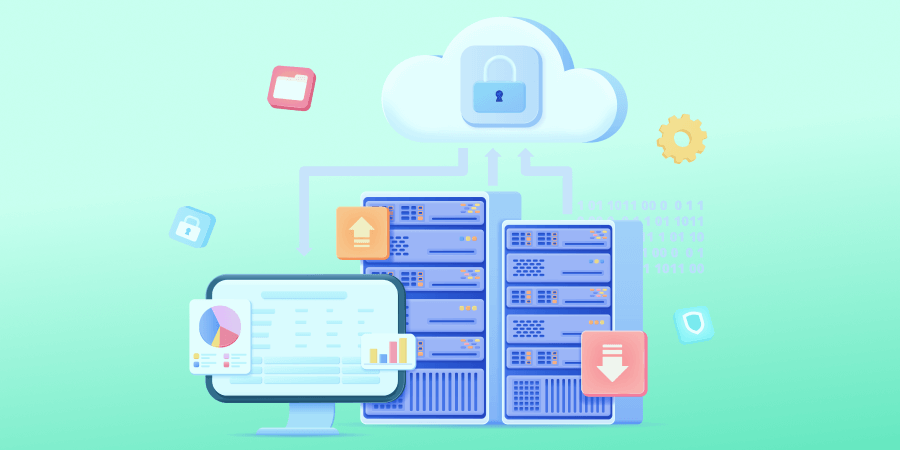
When we speak about the cloud, the first concern that comes to mind is cloud application data security and integrity. If you are an insurance provider, a neo bank, or a medical center, you operate volumes of personal and financial data.
It’s easy to assume what may happen if these sensitive details get into the hands of third parties. First, it will directly affect your clients. Second, data breaches inevitably entail reputational and, consequently, financial losses. Obviously, when selecting between the two evils — making efforts to ensure proper system security or dealing with massive data breaches, the first option seems to be preferable, doesn’t it?
Sometimes, attackers don’t set the purpose to take control of data. Their main aim is money they can gain from you when penetrating your system.
For example, cybercriminals hacked your cloud-based application and encrypted all data you operated with. They express the readiness to point out the detected vulnerability and bring you back access to your data but make ransom demands.
Here you come down to a series of choices. Whether to pay off the attackers, reinstate control over data, and fix the vulnerability (however, there’s no guarantee that they hadn’t detected another flaw and repeat the scenario from the very beginning). Or restore critical data with the help of backups, if you did them regularly, of course.
Yes, the second option seems to be better, but only at first glance. Restoring data from backups takes time. This automatically entails several-day downtime, which can be unaffordable for some companies.
So, here you’ll have to choose the lesser of two evils again, which is cheaper — pay the ransom and restore access immediately or use backups if downtime doesn’t bother you that much. But remember, the second option will work only in case you have backups, otherwise, there’s nothing to choose from.
Read about Cloud Disaster Recovery Best Practices
Cloud Application Security Threats and Risks that May Affect Business Resilience
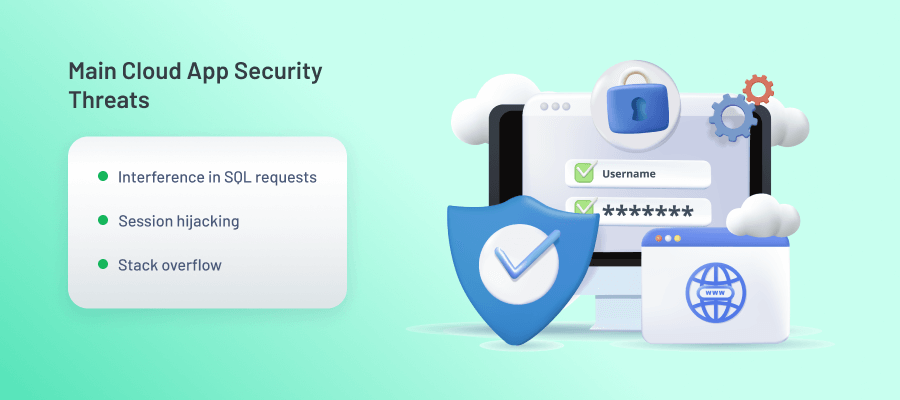
SQL Injections
All systems imply human interaction, and therefore, any application is a synergy of a programming language and a human touch. Below, let’s review an example of an online store.
Any online marketplace works with databases, normally SQL or MySQL. When you intend to make a purchase, the system sends the request to a database, in other words, makes an SQL request.
SQL injection is a kind of vulnerability that implies intervention in the SQL request. How does it happen? System code contains various symbols, such as semicolons, ampersands, and many others to write commands.
If a human accidentally or deliberately inserts symbols that are used in the code, there’s a possibility of interference in the SQL request and its incorrect processing. Why is it dangerous? Because in fact, the command change takes place. Therefore, attackers may gain access to sensitive data, such as personal and financial details.
Can there be a worse scenario? Unfortunately, yes. The example we discussed above implied a one-time action. However, there were cases when attackers had a permanent back door to the organization’s system and gained continuous access to its database.
So, remember, the risk of constant threat appears when your system doesn’t feature proper monitoring and alerting configuration. Keep in mind this seemingly minor thing when designing your cloud application security architecture.
Is it possible to prevent SQL injections? The good news is yes. When writing code, developers’ best practice is symbol filtering. This means that engineers block the majority of symbols that users can enter when communicating with the system.
But as expected, there’s bad news also. Blocking is not possible by default, for example, some outdated technologies don’t allow it at all. Or it can be done, but with complexities, and inexperienced engineers may conduct it insufficiently.
Read how we developed Blockchain-Based Intrusion Detection System
Session Hijacking
How many resources are you authorized on and use regularly? Online stores, insurance applications, internet banking — most likely, this list is far from complete. Let’s take a closer look at the example with the banking app.
When you authorize or log in to the personal finance application, you enter the login and the password to assure the server it communicates with you, not with somebody else. And every time you interact with the server, it provides you with a cookie session that has a particular duration.
Together with the cookie session, once you are logged in, the server gives you back tokens that are stored in your browser. And if your banking application lacks security configurations or you accidentally shared access to your browser, there’s a risk of cookie session interception.
In other words, attackers gain access to the session and are free to conduct any transactions until it’s over. Yes, because the server mistakenly assumes it communicates with you, so why would it block them? The question is rhetorical.
Stack Overflow
For example, you own an insurance company, and one of your clerks wants to generate a report on processed claims for the previous quarter. After making a request, the application returns an error and becomes totally blocked. Put simply, the clerk can’t proceed with any other operations because of the system failure.
There are several reasons why this could have happened. First, there was a low-power server, not intended for large volumes of data and requests. Second, the software engineer didn’t envisage unused resources disposal. In both cases, the server’s memory is full, in other words, it can’t process any inbound data anymore.
That’s what we name stack overflow — when we’ve run out of the server resources. Seemingly, why is it considered to be a vulnerability? Well, when a server returns an error, it also returns its details, and this information can be used by attackers to gain access to the data you store on it.
Safeguarding Your App Is a Breeze with the Cloud. Why?
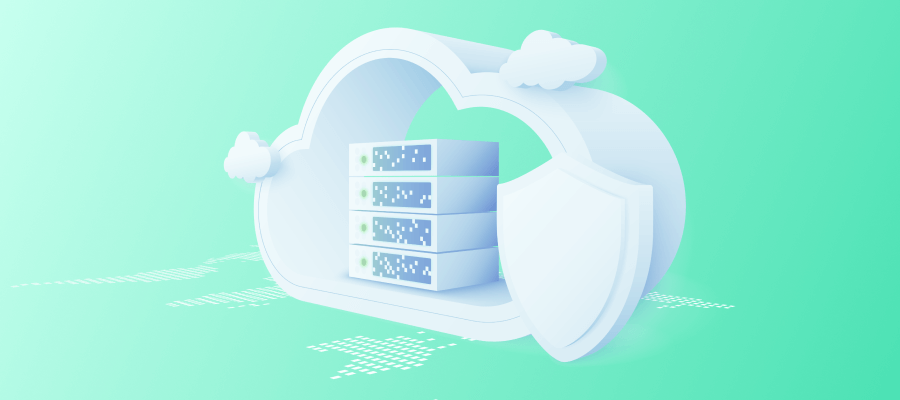
Securing cloud applications is easier because all large providers offer a cloud application protection service named Web Application Firewall. This service incorporates default protection against the most common vulnerabilities, including those we described above.
Your application is safeguarded, because the cloud analyzes and controls traffic between the server and your system. From which address the server can be accessible, from which can not — you are able to configure all security-related details at your own discretion.
If everything is fine-tuned properly, when detecting a suspicious command in your traffic, the system will give an alert or even block the IP address from which it had been done.
Explore why It’s Time to Move On From Your Legacy Enterprise System
Ensuring Multi-Layer Cloud Application Security. Main Practices Worth Following
Below, let’s see what can be done to avoid the cloud application security issues listed above.
Conduct Penetration Testing
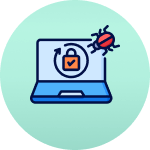
If your business is from the financial, insurance, or healthcare sphere, there’s no need to explain long what damage you’ll suffer if third parties penetrate your system and seize your data. That’s why many companies go for tangible expenses and invite a special organization dealing with penetration testing to ensure the maximum level of their cloud application protection.
Such specialists have a wide set of professional tools that scan systems for vulnerabilities. They simulate hacker attacks on different components of your system and create a checklist of the app’s weak points. Moreover, they not only check your application itself, they also test the employees working closely with sensitive data.
Agree that the human factor is the most common and serious vulnerability that you can’t control. For example, the instruction says that the employee must block the computer when leaving the working table. The human may ignore or simply forget this action. Such checks also fall within the competencies of organizations offering penetration testing among their cloud application security services.
Never Ignore Regular Updates
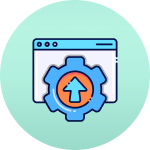
As it was already mentioned, there are no absolutely secure systems. Companies such as Google or Microsoft are also not insured from security issues.
Let’s refer to the recent example of Microsoft. In April, they released the largest Patch Tuesday rollout in seven years. They addressed 149 vulnerabilities that affected multiple product lines, with 90 impacting Windows users.
Just imagine, 149 fixes for one update! Similar updates, although not on the same scale, take place regularly. Think, how many vulnerabilities your software may have accumulated if you hadn’t updated it for five, ten, or even fifteen years?
However, there are cases where the utilized software is so old that the company which released it doesn’t roll out updates for it. The most vivid example is the operating system Windows XP. Although it’s quite old, it is still being used, but Microsoft doesn’t introduce any updates for this OS.
Discover How to Update Legacy Software
Use Password Managers
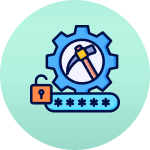
Use one password to access all your systems? Or have your passwords stored somewhere in a regular file? Both options are far from reliable if we speak about ensuring cloud-based application security.
To make password storage more secure and reliable, we’d recommend the usage of password managers offered by cloud providers, such as Key Vault in Azure. These features allow centralized and encrypted storage of all secrets, automated password rotation, and smooth integration with system components.
By the way, it’s one more point in favor of using the cloud, because such platforms have their built-in password managers. Therefore, you don’t have to look for a third-party system and integrate it with the existing one, putting the system’s security at risk.
How Many Resources and Efforts Do I Need to Ensure Bullet-Proof App Security? It Depends
As you may have expected, there’s no one-size-fits-all approach. It depends on a variety of factors: the domain, system scale, and the number of servers and users. And of course, the security level you intend to ensure.
If you have a business card site it makes little sense to spend huge resources on security. Quite different is the case with cumbersome systems that manage and store volumes of sensitive data. Here, it’s impossible to do with superficial security measures only. Such software requires an in-depth strategy to ensure bullet-proof protection at all levels — starting from system components and ending up with employees interacting with it.
Our Velvetech team provides a full spectrum of cloud consulting services and is well-versed in the best cloud application protection approaches. Drop us a line, our team will assist you in ensuring the rock-solid security of your system!









